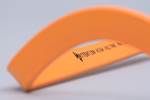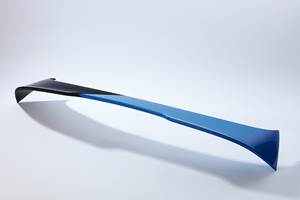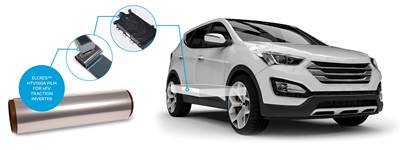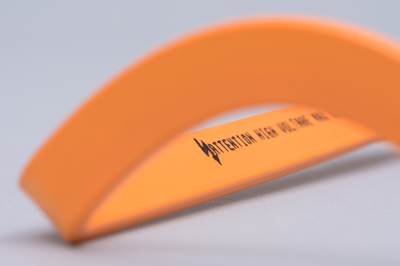New Technology Bonds Aluminum With Polyamides
With many benefits for numerous potential applications, including in the burgeoning electric vehicle market, Celanese’s Zytel Bonding Technology achieves stronger bonds than overmolding or welding.
Celanese Engineered Materials has developed a new chemical bonding technology for joining its Zytel polyamides and aluminum—a common design challenge in numerous automotive and industrial applications. Zytel Bonding Technology works via application of a liquid solution to an aluminum surface that is then activated via hot plate welding or overmolding. The resulting structural bond leads to higher burst, tensile and shear strength than conventional adhesives, mechanical interlocking and mechanical assembly methods. In burst pressure testing, the joint held while the plastic showed a cohesive failure.
With the ability to be added at room temperature, the coating can be sprayed, brushed, dipped or applied to a substrate in an injection mold, and it features a shelf life of up to 3 years. Compatible with multiple polyamide chemistries, this new bonding technology can join PA6, PA610, PA612, PA66, and PPA with aluminum. Celanese notes that all of these materials are available within the Zytel and Zytel HTN portfolios.
The disparate materials are joined in a three-step process, starting with the removal of aluminum oxide from the aluminum part surface via water sanding, wet blasting, or plasma/laser treatments. Next, Zytel Bonding Technology is applied via spray, brush, dip or other methods at room temperature. The coating is activated in the third step by overmolding plastic onto an aluminum insert or by hot plate welding a previously molded Zytel part to the aluminum component. The chosen method depends on the geometry of the final hybrid aluminum-plastic component.
At K 2022, Giacomo Parisi, marketing director automotive electrification at Celanese (formerly Dupont), discussed development of the technology and an early potential application—a hybrid cooling plate for an electric vehicle battery module.
“Hybrid” in this case because the two-part component features a plastic bottom and aluminum top. In an electric vehicle, these plates sit below the battery modules with water glycol cycling through them to ensure the batteries stay within the optimal operating range between 20 and 40°C.
At present, most cooling plates are monomaterial metal-on-metal constructions that experience the dissipation of heat through the bottom of the part. By utilizing a Zytel polyamide, the hybrid plate features better insulative properties. The company undertook testing to ensure the plastic/metal component could withstand the pressures and water-glycol exposure to be experienced in the field by the part. In the end, a 30% glass-filled Zytel HTN family of polyamides based on PPA was chosen. In addition to its robust mechanical properties and strong chemical resistance, this material was picked on the basis of its high dimensional stability—requisite in what has to be a flat part.
From a stress perspective, the water-glycol within the cooling plate reaches pressures of approximately 10 bar (145 psi). In terms of application temperatures, on the high side, the cooling plates work to keep the battery modules from overheating and cascading into a thermal runaway situation. In colder environments, the plates work to keep the battery modules from dropping below freezing.
In addition to the cooling plate, Celanese sees potential application of the technology in EV battery plugs; structural components, like beams, brackets, pillars, and mounts; noise and vibration reduction components; filters; modules; housings; clips; quick connectors; and flow leads, among others.
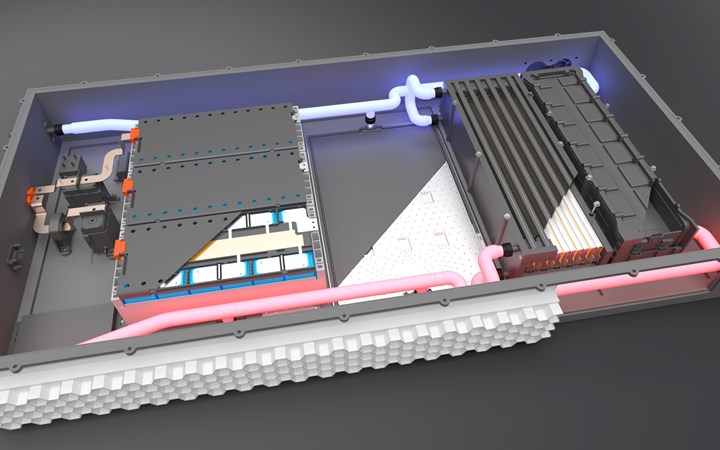
The cutaway in the center shows the combined polyamide/aluminum cooling plate that sits beneath battery modules in electric vehicles.
Photo Credit: Celanese Engineered Materials
Related Content
Celanese to ‘Shine’ at CES 2023 with Expanded Portfolio of Materials
With it acquisition of DuPont’s engineering resins, Celanese’s resin solutions for automotive electrification, e-mobility and consumer electronics are plentiful.
Read MoreMolder Repairs Platen Holes with Threaded Inserts
Automotive molder ITW Deltar Fasteners found new life for the battered bolt holes on its machine platens with a solution that’s designed to last.
Read MoreK 2022 Preview: Engineering Materials for Sustainability and E-Mobility
Materials that are sustainable yet offer equal performance to their fossil-based counterparts will be prominent at K 2022.
Read MoreImpacts of Auto’s Switch to Sustainability
Of all the trends you'll see at NPE2024, this one is BIG. Not only is the auto industry transitioning to electrification but there are concerted efforts to modify the materials used, especially polymers, for interior applications.
Read MoreRead Next
Thinner Gauge Dielectric Film for Capacitors of Hybrid, Plug-in-Hybrid, and Battery Electric Vehicles
SABIC’s new 3-micron gauge of Elcres HTV150A film is 40% thinner than its 5-micron film launched last year.
Read MoreNylon 12 Compound Boasts Highest Fire Protection for Busbars in High-Voltage Batteries of Electric Vehicles
Evonik’s new Vestamid LX9050 OR made with a halogen-fress flame retardant meets the requirements for classification V-0 of its flammability according to UL94.
Read More

